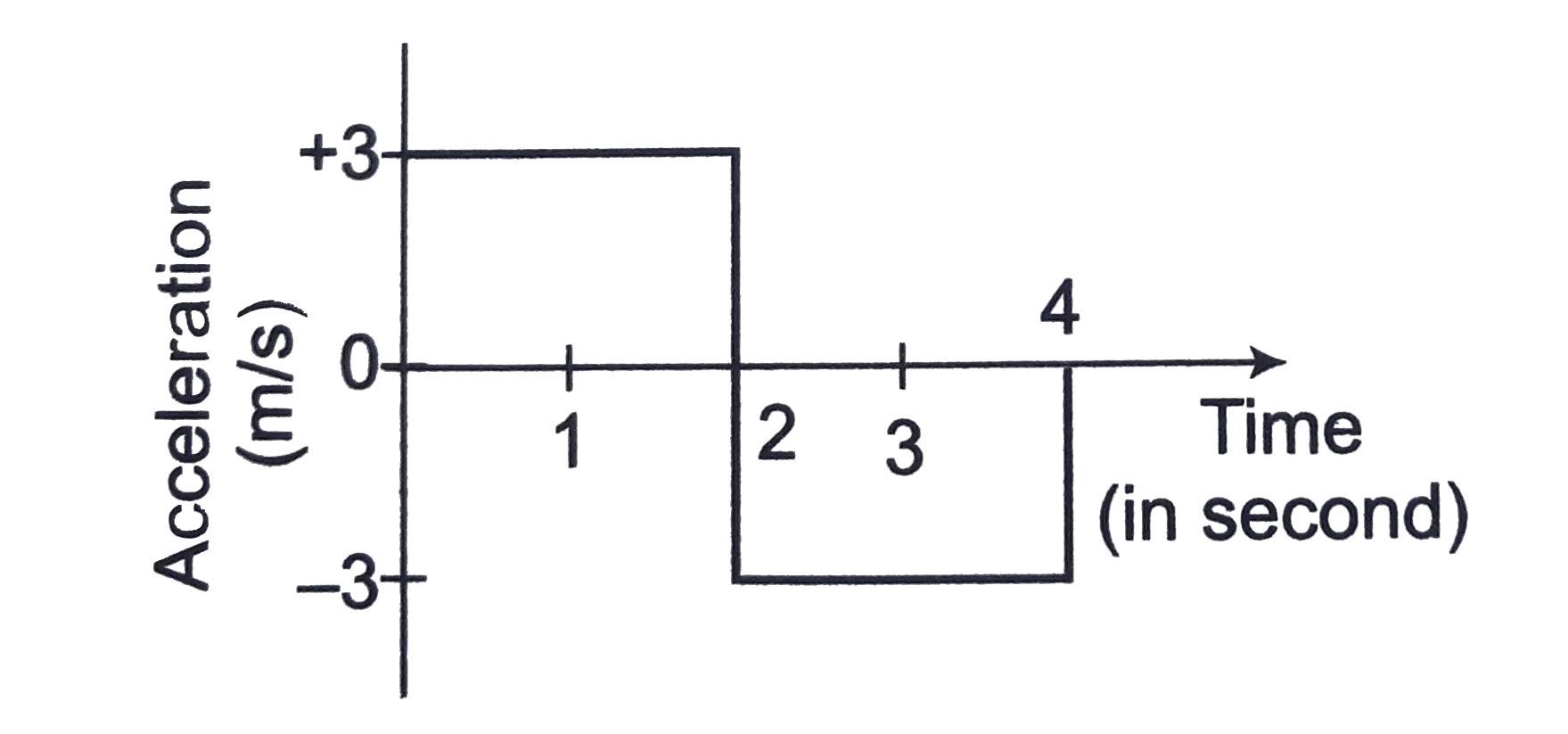The acceleration a of a particle starting from rest varies with time according to relation, a=αt+β. Find the velocity of the particle at time instant t.
Strategy : a=dvdt
To find the velocity of a particle at time t given that its acceleration varies with time according to the relation a=αt+β, we can follow these steps:
1. Understand the relationship between acceleration and velocity:
The acceleration a is defined as the rate of change of velocity with respect to time:
a=dvdt
2. Substitute the given acceleration:
Given that a=αt+β, we can write:
dvdt=αt+β
3. Separate the variables:
We can rearrange the equation to separate the variables v and t:
dv=(αt+β)dt
4. Integrate both sides:
Now we integrate both sides. The left side integrates with respect to v and the right side integrates with respect to t:
∫dv=∫(αt+β)dt
The left side becomes:
v
The right side becomes:
∫(αt+β)dt=αt22+βt+C
Here, C is the constant of integration.
5. Determine the constant of integration:
Since the particle starts from rest, at t=0, the initial velocity v(0)=0:
0=α022+β⋅0+C⟹C=0
6. Write the final expression for velocity:
Therefore, the expression for velocity v as a function of time t is:
v=αt22+βt
Final Result:
The velocity of the particle at time t is given by:
v=α2t2+βt
The acceleration a is defined as the rate of change of velocity with respect to time:
a=dvdt
Given that a=αt+β, we can write:
dvdt=αt+β
We can rearrange the equation to separate the variables v and t:
dv=(αt+β)dt
Now we integrate both sides. The left side integrates with respect to v and the right side integrates with respect to t:
∫dv=∫(αt+β)dt
The left side becomes:
v
The right side becomes:
∫(αt+β)dt=αt22+βt+C
Here, C is the constant of integration.
Since the particle starts from rest, at t=0, the initial velocity v(0)=0:
0=α022+β⋅0+C⟹C=0
Therefore, the expression for velocity v as a function of time t is:
v=αt22+βt
The velocity of the particle at time t is given by:
v=α2t2+βt
Topper's Solved these Questions
- BOOK - AAKASH INSTITUTE ENGLISHCHAPTER - MOTION IN STRAIGHT LINEEXERCISE - Try Yourself40videos
MOTION IN STRAIGHT LINE
- BOOK - AAKASH INSTITUTE ENGLISHCHAPTER - MOTION IN STRAIGHT LINEEXERCISE - Assignment (SECTION - A)50videos
MOTION IN STRAIGHT LINE
- BOOK - AAKASH INSTITUTE ENGLISHCHAPTER - MOTION IN A STRAIGHT LINEEXERCISE - ASSIGNMENT (SECTION - D)15videos
MOTION IN A STRAIGHT LINE
- BOOK - AAKASH INSTITUTE ENGLISHCHAPTER - MOVING CHARGE AND MAGNESIUMEXERCISE - SECTION D16videos
MOVING CHARGE AND MAGNESIUM
Similar Questions
The acceleration of a'particle starting from rest, varies with time according to the relation a=kt+c. The velocity of the particle after time t will be :
View SolutionThe acceleration of a particle which starts from rest varies with time according to relation a=2t+3. The velocity of the particle at time t would be
View Solution
Knowledge Check
- Question 1 - Select One
The displacement of a particle varies with time according to the relation y=asinωt+bcosωt.
AThe motion is oscillatory but not SHM.BThe motion is SHM with amplitude a+b.CThe motion is SHM with amplitude a2+b2DThe motion is SHM with amplitude √a2+b2.
A particle starts from rest and moves with an acceleration of a={2+|t−2|}m/s2 The velocity of the particle at t=4 sec is
View SolutionA particle starts from rest and moves with an acceleration of a={2+|t−2|}m/s2 The velocity of the particle at t=4 sec is
View SolutionThe position x of a particle varies with time t according to the relation x=t3+3t2+2t. Find the velocity and acceleration as functions of time.
View SolutionThe displacement of a particle varies with time according to the relation y=asinωt+bcoasωt.
View SolutionA particle starts from rest at t=0 and moves in a straight line with an acceleration as shown below. The velocity of the particle at t=3 s is
 View Solution
View SolutionThe acceleration of a particle varies with time t seconds according to the relation a=6t+6ms−2. Find velocity and position as funcitons of time. It is given that the particle starts from origin at t=0 with velocity 2ms−1.
View SolutionStarting from rest, the acceleration of a particle is a=2(t-1). The velocity of the particle at t=5s is :-
View Solution

